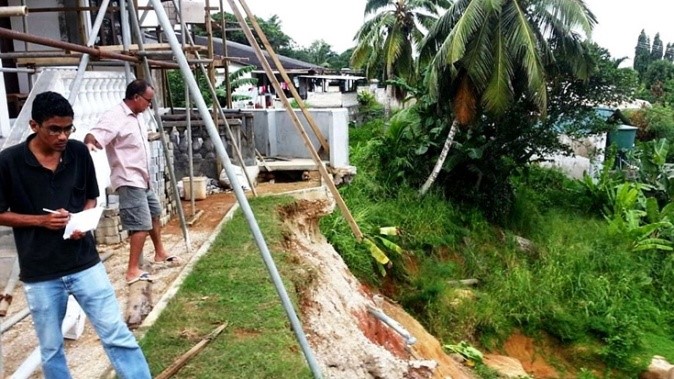Seychelles: Flood Impact Scoping and Recovery Planning

Context and Objectives
On January 27–28, 2013, heavy rains resulting from tropical cyclone Felleng caused severe flooding and landslides in the Seychelles, particularly in three districts on the southeast coast of Mahé, as well as on the nearby islands of Praslin and La Digue.
The objective of this project was to support the government of the Seychelles in sustainably recovering from the recent floods and building resilience to natural hazards. More specifically the objectives of the project were to:
- Identify the causes and impacts of the floods and land slides;
- Support the identification of consequent damages, losses and recovery needs in a number of key sectors;
- Provide training on the Damage and Loss Assessment Methodology; and
- Assess institutional structures for effective disaster preparedness and response.
Main Activities and results
The following types of activities were included and were closely coordinated between the Ministry of Finance, the Division Risk and Disaster Management under the Ministry of the Environment and Energy, and development partners, notably The World Bank, UNDP and European Union:
- Liaison with government and development partners on priorities for the assessment and mobilizing background data for the main affected sectors
- Training on the concept of Post Disaster Needs Assessments and sector specific data needs for a Damage and Loss Assessment;
- Evaluation of data and in-depth work with sector representatives, assessment of risk reduction and preparedness capacity of the country;
- Data compilation, macroeconomic analysis and reporting;
- Formulation of a framework for recovery needs;
- Presentation of findings and validation workshop
The Damage, Loss and Needs Assessment estimated the total damage and losses to USD 8.4 million, and recovery and reconstruction needs at USD 30.3 million.
The findings of the February 2013 Damage, Loss and Needs Assessment supported under the program laid the foundation for the creation in September 2014 of Sub-Saharan Africa’s first Catastrophe Deferred Drawdown Option (Cat DDO). A Cat DDO is a World Bank Group-financed disaster contingent credit line which provides the government with $7 million in immediate liquidity in the aftermath of a large-scale catastrophe, a time when liquidity constraints are usually highest.
Based on the assessment findings, the government of Seychelles implemented short, medium and long-term disaster-resilient development initiatives in order to better cope with disasters. These measures were expected to benefit 87,000 people and rehabilitate and protect 500 kilometers of roadways from disasters.
Partnerships and Coordination
The activity was a follow-up or detailed assessment and verification of the the post-flood damage assessment originally conducted by UNEP. This activity ensured the understanding of the assessment by each stakeholder, and data was collected based on a standardized format to ensure consistency. A close consultation has been done with partners like UNEP, WHO, Red Cross and the EU.
In addition, the assessment on flood impacts and recovery needs was rooted in the development axes pointed out in the Seychelles Medium-Term National Development Strategy 2013-2017 (MTNDS), which set out the vision and goals to achieve a reduction in Seychelles vulnerability and to provide a basis for long term sustainable development.
Useful Links
The final Seychelles Damage, Loss, and Needs Assessment can be found here.
Country
Region
- Africa
Priority area
- Risk identification and assessment
Window of Action
- Window 3
Amount approved
- $73,792
Co-financing
- $7,500
Duration
- 03/2013 - 12/2013



